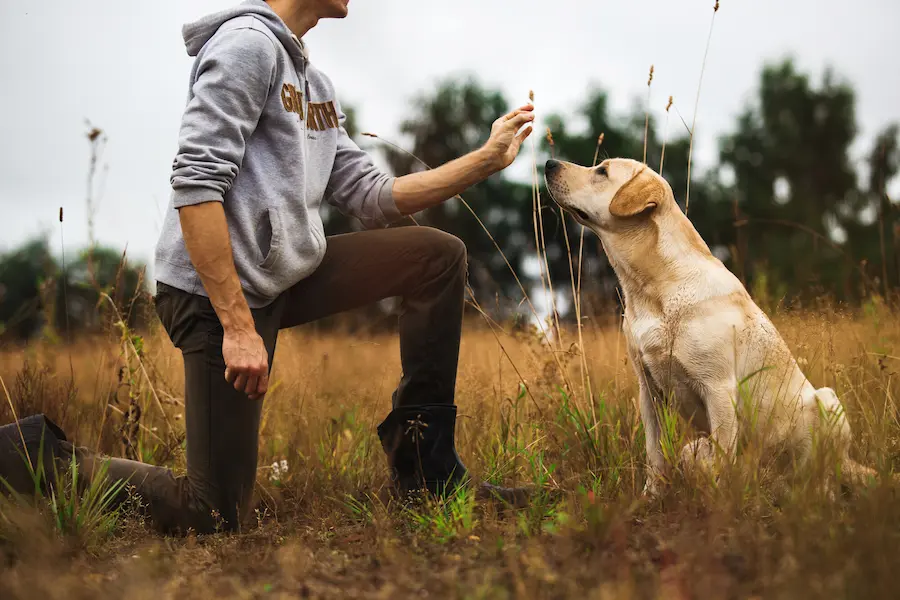Training a dog is not all that hard, but it is important that you understand what you are doing so you can avoid mistakes. Nobody wants their dog to learn the wrong behavior or to not learn any behavior at all.
As such, dog training for puppies can be tricky. In this article, we are going to be discussing a few essentials of dog training. Hopefully, reading this article will make it clear to you that training a puppy is not all that difficult.
Without further delay, let’s get started.
Table of Contents
Collar and Leash
Dog training for puppies requires more than a basic understanding of the leash. Primarily, it is important to understand that the leash is the link between handler and pup and should be used to consistently set the boundaries and expectations of your pup.
It is important to get your pup used to wearing a collar and leash and then have them understand the concept of following their handler when the leash is taut. Ideally, the collar should be comfortable and not too tight while allowing enough room to fit two fingers between the collar and the neck. Gradually your pup will understand that if the leash is slack, then they can explore at their own pace.
Being consistent in when and how long the leash is used is integral to a puppy’s development. As your pup matures, so does their understanding of the leash as an obedience tool as well as for play and leisure.
Puppy training should include a leadership program that teaches your pup the right behavior so that they can understand when the leash is intended to be a tool of encouragement and direction.
Clickers
Introducing clickers as part of the training process can be an effective tool for reinforcing good behavior. Clicker training uses an audible sound – usually a short, sharp click – to mark a desired behavior and quickly communicate with your pup.
Each time the puppy performs the desired behavior, he will be rewarded with a treat. The clicker becomes associated with a reward, and the pup learns that certain behaviors will earn him a treat.
Clickers are great for teaching basic commands such as ‘sit,’ ‘down,’ and ‘leave it.’ Clicker training takes the guesswork out of dog training and is the perfect way to get your pup off to a good start.
Treats
When it comes to training a puppy, treats should always be seen as a reward rather than a bribe. Allowing the puppy to associate the treat with a certain behavior reinforces the actions that the owner is looking for. Giving treats sporadically and variably can help prevent any potential spoiling that can occur if the puppy expects a treat all the time.
Setting criteria for treats should be clear for the puppy and can help in establishing expectations for their behavior. Treats should be small, with the size depending on the type of breed or size of the puppy. Using treats helps to strengthen the bond between pup and owner and allows for quicker, more effective training.
Dog Training for Puppies
Overall, dog training is an important milestone for puppies. With patience and consistency, dogs can be loving, obedient companions. By following these essentials, owners can make the process enjoyable and be rewarded with a loyal, obedient pup that knows the rules.
Take the first step towards better training, and make sure to provide plenty of love and reinforcement!
For more helpful guides, check out the rest of our website.

